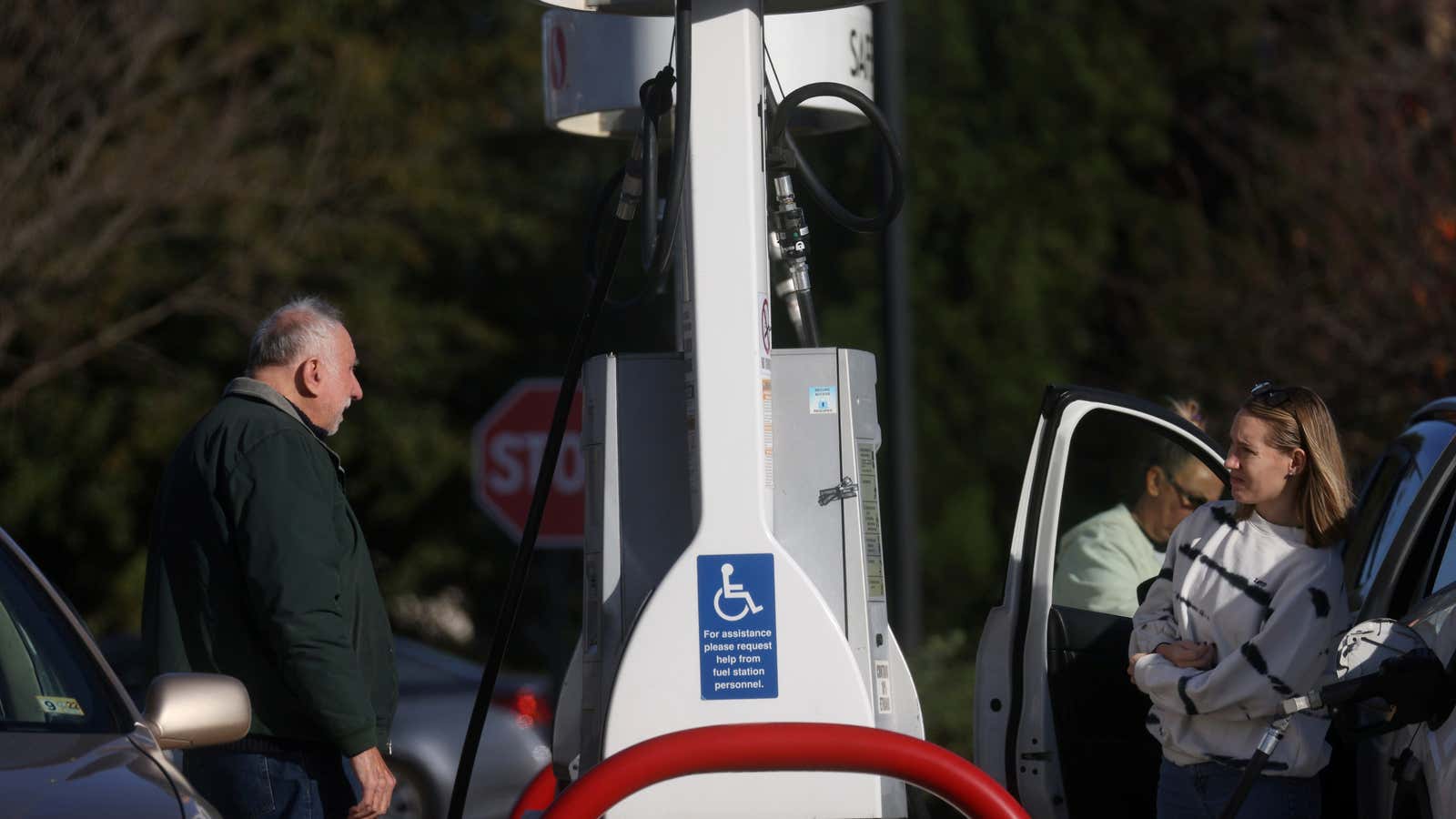High prices in the US have been reshaping what shoppers buy, including switching to more affordable options, like store brands. Now inflation, which is at a 40-year high, is also changing how often people go to the grocery store.
Shoppers at Albertsons, the second-biggest US grocery chain, are limiting shopping trips as a way to save on gas. Consolidating grocery trips is a behavior that started during the pandemic, largely to avoid potential covid-19 exposure, but it has started to increase again as fuel prices rise, said Vivek Sankaran, Albertsons CEO, in a conference call with investors and analysts on Tuesday. “[T]here’s a new behavior that seems to have become more entrenched,” said Sankaran.
Basket sizes—grocery industry lingo for how much shoppers buy on each trip to the store—are “substantially larger” than those in 2019, even accounting for inflation, said Sankaran. Part of the reason could also be due to more people eating at home, he said. That could be an effort in and of itself to stretch food budgets.
Unlike purchasing food, where consumers can cut back on going out to eat, high gas prices are hard to escape—walkability and public transportation for trips like grocery shopping and commuting are in short supply in much of the US.
Inflation driven by high gas prices
Inflation rose to 8.5% in March from the same month last year, with gas prices experiencing the sharpest year-over-year increase at 48%. Food prices are up 8.8%, with grocery prices jumping by 10%.
Albertsons, which also owns Safeway, said for now consumer demand is strong but it expects low-income shoppers to spend less on groceries later this year.
